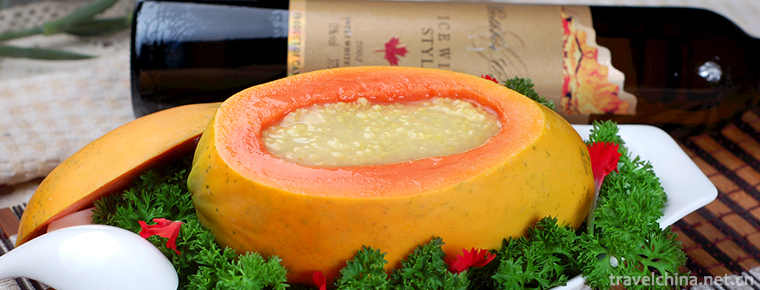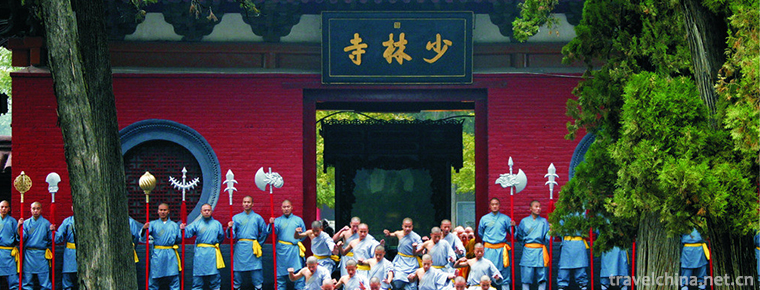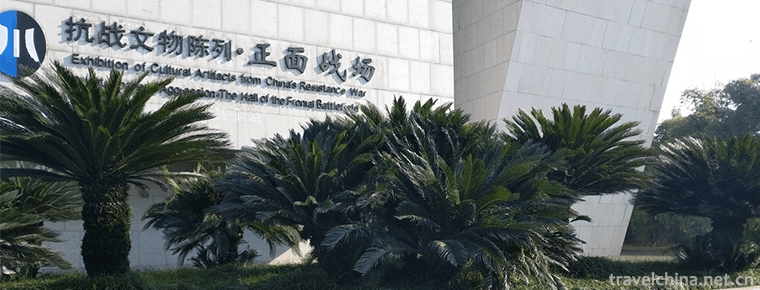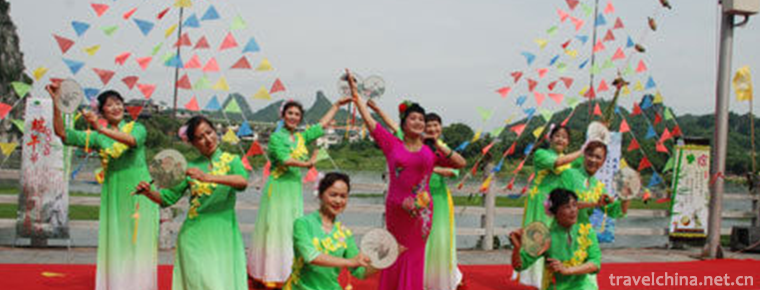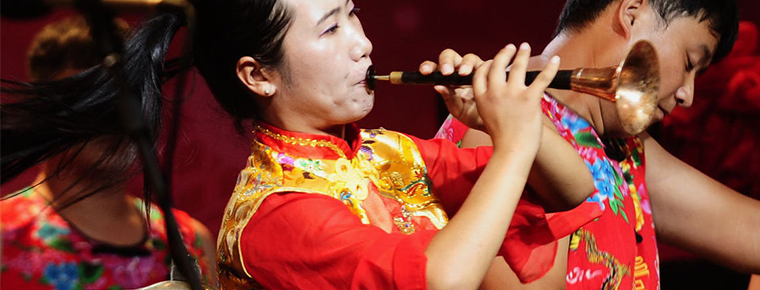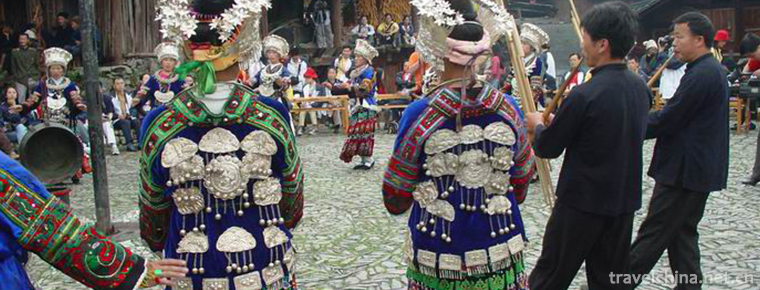Production Techniques of Yuping Xiaodi
Production Techniques of Yuping Xiaodi
Yuping Xiaodi production technology, Guizhou Yuping Dong Autonomous County traditional handicraft, one of the national intangible cultural heritage.
Yuping Xiaodi is made of a special bamboo as raw material through four processes: material taking, blank making, carving and finished product. The manufacturing process is complex and all of them are handmade.
On May 20, 2006, Yuping Xiaodi production technology was approved by the State Council and listed in the first batch of national intangible cultural heritage list, project number_-34.
historical origin
The record of Yupingxiao is first seen in Qianlong's Records of Yupingxian County in Qing Dynasty: "Pingxiao, a different biography of Zheng's family, has a clear rhyme. A good voice is a good voice. As for the origin of the Yuxiao flute, there are two sentences circulated among the Dong people in Yuping: "Immortals go to Yuping to retain the ancient tune, and visitors visit friends from abroad". According to legend, 300 years ago, there was a Taoist who claimed to be a "deerskin immortal" in ancient times. He swam to Yuping on a long way, loved the beautiful water, beautiful mountains, and abundant bamboo trees. He then stayed and made an irreversible acquaintance with a local Dong talent named Zheng. Taoist people are good at melody. Every time they have feelings, they send them silk bamboo. But although there are many bamboos in the area, they have no pipe. One day he picked up a bamboo from the mountain and made it into a flute to play, which aroused the sympathy of acquaintances. Soon after, when the Taoists were going to travel to other places, they handed down the skill of making flutes to the friend named Zheng. Since then, the Zheng family began to make self-made self-selling chopsticks. Since then, Yuping has had the production of Xiao.
Jade screen flute, folk anecdotes spread. But according to Zheng Jia and his colleagues in the cutting industry, Zheng Jia made flutes from local bamboo, not twisted silk, not painted, only white wax, retaining the true color of bamboo. The style is novel and unique, and the timbre is far better than the bamboo flute produced in the north and south, so it is named "Jade Flute" in the name of "Jade" in Yuping, its hometown. According to his father's theory of "temperament diagram" in "Harmony and Ming Sheng", he paired the flute and called it "Pingxiao Jade Flute".
The music-loving Zheng family regards the skill of making flute as a heirloom and sticks to it for generations. Therefore, Zheng's flute became famous in the Ming and Wanli dynasties. In the Ming and Qing dynasties, the Yuping flute was designated as a tribute by the royal family and worshipped in court. During the Xianfeng period of the Qing Dynasty, the descendants of Zheng's family were forced to sell their chopsticks because of their depressed family background. From then on, they began to despotize the flat chopsticks and put them up for sale. Later, due to the shortage of product supply and demand, we began to break the rules of inheritance, recruit apprentices and spread art to the outside world, and expand the scale of production. By the time of the Anti-Japanese War, the production of Yuping Xiaodi had developed greatly. There were more than 30 Xiaodi shops and more than 80 practitioners in the urban area alone.
After 1949, the skill of making flute was protected. From the 1980s to the early 1990s, it was the peak period of the development of Yuping Xiaodi. Its products were awarded the title of provincial and ministerial excellent year after year, with a maximum annual output of more than 500,000 pieces and an output value of more than 800,000 yuan.
Technological characteristics
Yuping Xiaodi is exquisite in material, fine in workmanship, beautiful in appearance, pure in sound quality, beautiful in timbre and long in rhyme. Its carved poems, lyrics and songs, celebrities and beautiful sentences, landscape flowers, dragons and phoenixes, the beauty of shape and sound into one, so that the flute is not only an elegant musical instrument, but also a very exquisite handicraft, as well as a unique tourist souvenir. Among them, the traditional value is Xiao, each pair of male and female, female Xiao slightly fine, male Xiao slightly rough, sound like the difference between Phoenix and dragon chant. However, both sexes are matched, the sound is harmonious, beautiful, quiet at night, such as notes, such as complaints, such as sobs, long-distance love and feelings, endless changes in rhyme, joy, anger and joy are all in it. Those who are good at manipulating, the clear breeze of the moon, the six rhythms of fairy music, and other wonderful scenes, are also known as "Shenxiao Jade Flute".
Technological process
Yuping Xiaodi has a long history of making technology. It is a typical representative of traditional handmade Xiaodi. It has a history of more than 400 years. It takes a special water bamboo growing in Yuping County as raw material, through four technological processes: raw material, blank making, carving and finished products, the production process is complex, and all of them are manufactured by hand. From cutting bamboo to making bamboo, there are 24 processes for making bamboo chop and 38 processes for tuning flute. Finally, the flute surface is carved with poems and paintings. The bronze color of the pipe body is carved with various patterns and poems, which are more simple and elegant.
Draw materials
The material requirement for making Yuping Xiaodi is very strict. A special bamboo growing near Yinshan stream with little sunshine should be used as the material. This kind of bamboo has long and thick knots, the thickness of roots is basically the same, and the size of thumbs. Cutting bamboo time is also exquisite, it should be within two months after the beginning of winter. At this time, the bamboo contains less water and sugar, and the flute made is not easy to crack and mildew.
The selected bamboo has straight whiskers, symmetrical head and tail size (part of the material taken), sparse knots (more than 30 cm), and has grown for more than three years. The materials for making Yuping Xiaodi are mostly from Feifengshan and Sun Mountain in this county. A kind of black purple bamboo growing on these two mountains has excellent texture and low yield, and it is also a good material for making high-grade products.
There are four processes in the material acquisition process: material selection, material cutting, baking straightening, inspection and storage.
Blank making
(1) Planing the outer section: also known as rough planing, is planing the knot head part of bamboo;
(2) Scraping bamboo: Scraping the outer skin of bamboo;
(3) Material selection and cutting: According to the length and thickness of the product varieties, select the bamboo materials that meet the requirements;
(4) Opening the inner section and leading the way;
(5) Re-baking, heating and straightening (called fine calibration);
(5) Planing two sections (also known as fine planing);
The bullet center line and ink-rolling line;
(_) Performing sound holes;
Water mill;
_Eye repair.
In the production of flute, the two processes of "opening calls" and "opening windows" should be added. In the process of billet making, it is the most important to clamp the flat bamboo and open the opening in the process of making the traditional flat shave. The technique of clamping flat bamboo is the only unique skill in making flute in China. Before liberation, this unique art belonged to Zheng's exclusive, secret not to be passed on. It was not until the 1950s that it was made public. Pinching flat bamboo is a process of processing raw bamboo. The bamboo material is baked with firewood. The bamboo tube is lightly clamped from beginning to end with iron pliers to make it oval flat bamboo and straighten with wooden clamps. "Biao" is the blow hole of the Xiao, which is not properly opened, volume, timbre and pitch are affected.
carving
The flute carving is divided into characters and drawings. Traditional products were initially engraved with shop name and date only. Since 1930, there have been dragon and phoenix, flowers, landscape carvings, and the content of carvings has gradually enriched. Sculpture can be roughly divided into four processes: deinking and grinding, pasting patterns, sculpture and water-grinding paper scraps.
A single knife is used for lettering. Xing, Cao and seal carvings are Yin carvings and Yang carvings. Traditional sculpture, according to the Eight Ways of Yongzi, can be classified into eight kinds of knife methods: cutting, killing, drawing, picking, chiseling, picking, cutting and rubbing. On the cutting edge, it can be divided into vertical knife and transverse knife according to bamboo fibre, straight knife and reverse knife according to font strokes, vertical vertical and transverse road and oblique and oblique and reverse knife according to the combination of material and font.
The cutting edge must be slipped back with a single knife at first, and the speed is slow. In the 1960s, it began to use double-knife engraving. All kinds of knife methods can be used freely without sliding back. The composition is banner-like and Yin-carved. Panlong relief began in 1980.
finished product
After baking, washing, washing, filling, color wiping, painting four processes. The grinding process is the main one in the four processes. The primitive polishing uses knotweed, wipes off the dirt on the flute surface, and then polishes the flute with a jade saucer. After 1958, the flute was polished with water sand and the longevity beads were polished. This art continues to this day.
The flute with exquisite workmanship and pure timbre can be produced only through four elaborate working links: material acquisition, blanking, sculpture and finished product.
Inheritance and Protection
Inheritance value
Scholars of all dynasties know much about rhythm and rhythm and love flute. They leave immortal chapters by purging their minds, cultivating their sentiments, expressing their wishes and feelings, and become an indispensable bright pearl in the treasure house of human cultural heritage. It can be seen that Yuping Xiaodi, as a materialized form of the colorful folk customs of Yuping nationalities, is inextricably linked with the folk festival activities in Dong Township. The cultural implication is far beyond its practical function and value. It has rich cultural implication and profound cultural connotation.
Current situation of inheritance
With the acceleration of the modernization process, the national musical instruments have been greatly impacted, and the protection and development of the flute making skills are in a grim situation. At present, the production technology of Yuping flute is facing the situation that no one succeeds and no one dies. There are only seven flute factory directors and managers, and fewer than ten veteran artists engaged in flute production in urban areas. If we do not rescue and protect the skill of making Yuping Xiaodi, this characteristic handicraft will soon disappear in the world.
Heritage figures
Yao Maolu, male, Dong nationality, born in Yuping, Guizhou in 1946. In June 2007, he was selected as the representative successor of the first batch of national intangible cultural heritage projects and declared in Yuping Dong Autonomous County, Guizhou Province.
Current status of protection
In 2006, China Yuping Xiaodi Art School was established. Jiang Guoji, Chen Hongyan, Zhou Linsheng and other experts were hired as school consultants to guide students'flute skills during the semester.
The Yuping Xiaodi Museum, which began to be built in June 2012, was set up in November. It is a special Museum of non-relics. This Museum strongly promotes the inheritance and protection of the production techniques of Yuping Xiaodi.
social influence
Important Exhibitions
From May 11 to 14, 2017, the 13th China (Shenzhen) International Cultural Industry Fair was held in Shenzhen. The production skills of Yuping Xiaodi were displayed in the exhibition.
From April 14 to 17, 2017, the 2nd China (Ningbo) Cultural Industry Exposition was held in Ningbo International Convention and Exhibition Center. The production skills of Yuping Xiaodi were displayed in the exhibition.
Honorary recognition
In 1913, Yuping Xiaodi won a silver medal at the London International Handicraft Exhibition.
In 1923, Yuping Xiaodi won the gold medal at Panama World Expo in San Francisco, USA.
Cultural anecdotes
There are also moving legends about Yuping Xiaodi. The record of Yupingxiao is first seen in Qianlong's Records of Yupingxian County in Qing Dynasty: "Pingxiao, a different biography of Zheng's family, has a clear rhyme. The good voice is not to reduce the wind. Legend has it that several years ago, Zheng Shi, who moved from Shandong to Yuping to settle down, visited relatives and friends in Zhenyuan Province. Once in a while, I met an old deerskin with a crane's hair and child's face, and made a bosom friend with him. Not long after Lao Dao came to Zheng's house, he suffered from a serious illness. Zheng's family treated him like relatives, fried soup and sent medicine, and took good care of him. When Lao Dao recovered from his illness, they often visited the city. One day, when I visited Yuping Peak in the north of the city, I saw eight immortals, Han Xiangzi, Lu Dongbin and Zhang Guolao, coming from the eastern horizon by the auspicious clouds and sitting on Shilian Peak, playing and singing. They hurried to Shilianfeng, only to see the fairies playing music and driving away. They searched for eight fairy traces and found one of them, Han Xiangzi. They waited until the sunshadows westward tilted and no fairy returned. They had to take Shenxiao home. The next day, they went to Feifengshan in the southwest of the city to play. They saw green bamboos all over the mountain. Old Tao selected two bamboos with phoenix tail and brought them back to make a pair of flutes, which matched male and female, and had a melodious and quiet tone. To express their gratitude, Taoists taught Zheng Jia the skill of making flute. Zheng's elegant temperament is beyond expectation. He is regarded as a family heirloom, handed down from generation to generation, and keeps his career.
People often use the flute to express their pure feelings and yearning for beautiful things. Friends and bosom friends often give it to each other as a treasure. Lovers and newly-married couples use it as a token of love and a symbol of good marriage. The dragon and phoenix patterns carved on the Yuping Xiaodi are said to be based on Xiao Shinong's love mythology about the dragon and phoenix. Yuping Xiaodi is mostly played in pairs of male and female, which is implicit and meaningful. Both male and female play together, just like a lover singing, full of interest, so it has the reputation of "Shenxiao Xiandi".

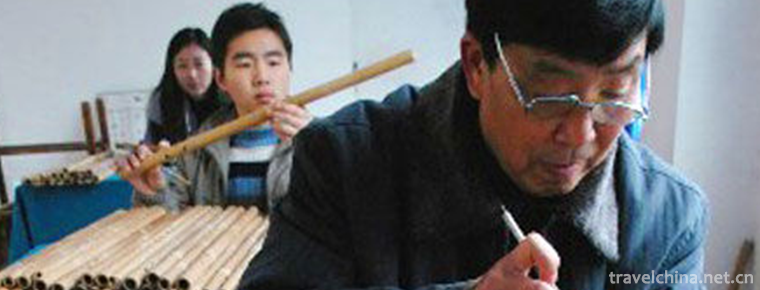
-
Pumpkin rice gruel
cut Pumpkin Peel into thin slices and rinse with millet. Put some water in the pot, put water into pumpkin millet and boil it in a big heat..
Views: 365 Time 2018-11-02 -
Shaolin Temple
Shaolin Temple is the birthplace of Chinese Buddhist Zen ancestors and Kungfu. It is now a world cultural heritage, a national key cultural relics protection unit.
Views: 121 Time 2018-11-11 -
Nanning Zoo
Nanning Zoo, located at 73 East University Road, Nanning City, was built in 1973. It was officially opened to the outside world in 1975 with a total area of 39.1 hectares. It receives more than 1 mill.
Views: 172 Time 2018-12-27 -
jianchuan museum cluster
Jianchuan Museum is called Jianchuan Museum Settlement in Chengdu City. Founded by private entrepreneur Fan Jianchuan, it is located in Anren Town, Dayi County, a small museum town of China.
Views: 216 Time 2019-01-21 -
Chao Opera
Chaozhou Opera, known as "Chao Diao", "Chao Yin Opera" and "Bai Zizi Opera", was widely spread in Zhao'an, Yunxiao, Pinghe, Dongshan, Zhangpu and Nanjing of southern Fuji.
Views: 165 Time 2019-04-16 -
Heap harmonics
"Heap Harmony" first spread in the Yarlung Zangbo River Basin, the high terrain west of Shigaze to the whole area of Ali circle dance, and later gradually prevailed in Lhasa. It was the firs.
Views: 95 Time 2019-04-28 -
Guangxi Wenchang
Wenchang in Guangxi is short for Wenchang, also known as Wenjuzi and Xiaoqu. It is the traditional Solfeggio art popular in the northern Guangxi Mandarin area, especially in Guilin.
Views: 106 Time 2019-05-01 -
Drum and percussion music in Southwest Shandong
Southwest Shandong drum music is a kind of traditional folk instrumental music in Shandong Province. It takes Jiaxiang drum music as a typical representative and mainly distributes in Jining, Zaozhuan.
Views: 325 Time 2019-05-15 -
Man Han tune
Han Han tune. Chinese translation means desert tone. A form of folk songs. Mainly popular in Mongolia and Han mixed Yikezhao League Zhungeer Banner, Dalat Banner and Baotou City Tumut Right Banner, Ho.
Views: 114 Time 2019-05-21 -
Bronze drum dance
Tonggu dance is one of the most popular and influential ancient dances among the Zhuang and Yi people in Wenshan Zhuang and Miao Autonomous Prefecture of Yunnan Province. It is distributed in Zhuang a.
Views: 94 Time 2019-06-21 -
Yangxin Tea Picking Opera
In May 2011, Gao'an City, Jiangxi Province, Linchuan District, Fuzhou City, Shaoguan City, Guangdong Province declared that tea-picking operas (Gao'an tea-picking opera, Fuzhou tea-picking opera, nort.
Views: 233 Time 2019-07-10 -
Geographical environment of Suining
Suining City is located in the middle of Sichuan Basin and the middle reaches of Fujiang River. It is between 105 ° 03 ′ 26 ″ - 106 ° 59 ′ 49 ″ E and 30 ° 10 ′ 50 ″ - 31 ° 10 ′ 50 ″ n..
Views: 163 Time 2020-12-16
